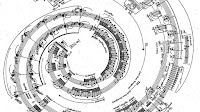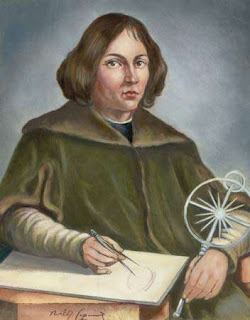Week 2: Math+Art
School has taught me the notion that math and science don't coalesce. A math student with who earns perfect scores in AP Calculus often sees little need to explore her artistic side, whereas a AP studio art student often treats the SAT math section as a nuisance that raises the threshold for college admission. Although the education system has structurally divided the two fields of academia, its arbitrary segregation of the "left brain vs right brain" majors overly simplifies relation between the two dimensions, and fails to address the frequent overlaps of the two.
Flatland gave me an insight into the romance of math and science, while Music and Computers juxtaposed the science of acoustics with the art of music. The examples provide ample evidence for the intimacy between math and art, and allows me to view artworks through a difference lens.
Flatland gave me an insight into the romance of math and science, while Music and Computers juxtaposed the science of acoustics with the art of music. The examples provide ample evidence for the intimacy between math and art, and allows me to view artworks through a difference lens.
As a fan and practitioner of house music, I have worshiped the "magic number" of 128 bpm in prospect of what it does to the human body. A good Dj controls the crowd's natural body movement by synchronizing the tempo with the human heartbeat. During the buildup, the Dj slowly increases the music's amplitude and tempo, thereby accumulating the momentum of the human body. Right before the drop, the Dj shoots up the base and volume to accentuate the climax of track, and synchronize the crowd's body movement with the 128 beats/minute tempo. While most dancers stand oblivious to the empirical math behind the bars and measures of the song, their bodies are able to map out its structure and dance accordingly.
The numbers simply don't lie. Artists rely on math to formalize their works and diffuse the entropy that naturally randomizes the ambivalent human emotion. Thus it can be argue that math itself is an artwork of discipline that lays out the ground rules which help the artists compile their emotions into pieces perceptible to the external eye.
Abbott, Edwin A. Flatland. 1884, www.ibiblio.org/eldritch/eaa/FL.HTM.
Burk, Phil. “Music and Computers.” And, sites.music.columbia.edu/cmc/MusicAndComputers/.
Joseph, Max, director. We Are Your Friends. 2015.
“Mathematics & Music.” AMS, www.ams.org/publicoutreach/math-and-music.
M.C. Escher. The Mathematical Art of Escher, platonicrealms.com/minitexts/Mathematical-Art-Of-M-C-Escher/.



Wow, fascinating comment about the way DJ's are able to synchronize the beat of one's heart to that of the energy that makes one's body move! I would have never expected something like house music to have a scientific relevance to it. I've heard theories of classical music stimulating brain activity, but never something like this. I wonder what other elements of art and music have relevance to how we physiologically react to it!
ReplyDeleteWhat an interesting point. I also wrote something about math, art and music in my post. However, the math I studied is about the graphics those curves generated by those equations. I found your point interesting because you tell me that math can actually be utilized into the music production, which coincides my thought of math supports art and sciences.
ReplyDelete